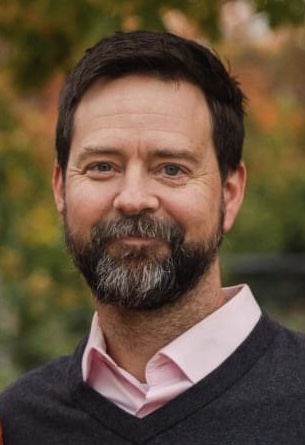
Texas A&M university alumni David Henderson was recently named the Department of Nuclear Engineering’s Distinguished Former Student, an award given annually to alumni who embody Texas A&M’s core values in their research and career. Henderson received the award for his exceptional years of service with the Department of Energy’s Office of Nuclear Energy. Henderson chose to study nuclear engineering at Texas A&M University on a gut instinct. “The nuclear engineering program stuck out to me because I saw it as one of the bigger challenges to tackle,” said Henderson. “The challenge and the complexity of the field excited me.”
As a graduate student, Henderson completed his master’s thesis under Dr. John Poston. He wanted to pursue the topic of nuclear waste, however, the department didn’t have an established set of courses available for that area of study. Together, they created a custom interdisciplinary track for Henderson and he completed his thesis work on the radiological consequences of a range fire over the Hanford nuclear waste ponds.
“My classmates would jokingly say that I wasn’t a ‘real’ graduate student, but I made my own path,” said Henderson.
Soon after graduating, Henderson was offered a position with the Department of Energy (DOE) to help manage nuclear research and development. Within months, they began putting him in charge of his own projects, and by his first year he was developing a program on nuclear hydrogen research.
Henderson, who said he barely passed chemistry, was a bit terrified at being referred to as the hydrogen expert. “I found that with the government, while you may start off with a lower salary, the opportunity for advancement is much quicker than in industry,” he said.
While Henderson still works with the DOE, he took three years off to move to Paris where he worked at the Nuclear Energy Agency.
“I had minored in French as an undergraduate and I really wanted to give my kids exposure to life outside of America,” said Henderson. This time Henderson was looking at nuclear reactor deployments and technology development on a global scale. He would review various countries’ energy policies and try to determine, for example, whether they were setting reasonable goals for the future.
In late 2018, Henderson and his family returned to the United States where he currently works as a program manager for advanced modeling and simulation research and development with the DOE. He recently managed the close out of one major program – the Consortium for Advanced Simulation of Light Water Reactors – and the reorganization of another – Nuclear Energy Advanced Modeling and Simulation – to ensure that DOE’s modeling program would effectively address the needs of both existing light water reactors and the future deployment of non-light water reactors.
Henderson has some advice for current students. First, he advises that undergraduate students take at least one class outside of the nuclear engineering curriculum, especially social sciences or communication. “For one, the industry needs to communicate and relate in order to survive,” said Henderson. “But also, most people in the nuclear industry do not have a nuclear degree.”
While many reactor designers and operators have a nuclear degree, Henderson spends most of his time collaborating with colleagues who have a background in chemical, mechanical or electrical engineering, for example.
And his biggest piece of advice? Don’t give up. “Especially to a nuclear engineering student, stick with it,” he said. “Because it’s very difficult but you’ll come out with a degree that enables you to understand a range of technologies, speak intelligently and be proficient in related engineering fields as well.”